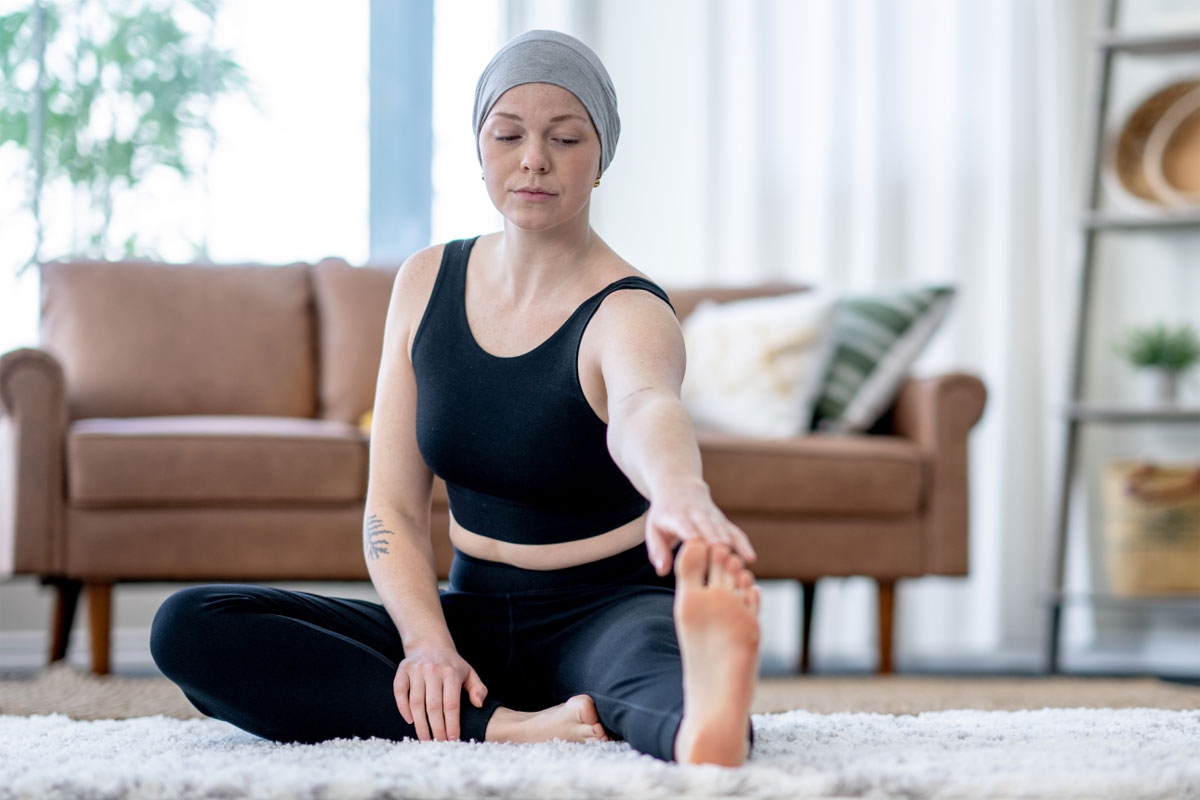by Éadaoin McNamara
Why exercise?
It can be difficult to motivate yourself to exercise when you have received a cancer diagnosis and feeling unwell, especially if you were less active prior to your diagnosis.
If you are being treated for cancer, physical activity can help you to:
- increase your energy levels
- reduce fatigue
- reduce anxiety and depression levels
- reduce nausea
- improve your mood and self-esteem
- reach and maintain a healthy weight
- improve the quality of your sleep
- improve your strength, bone health and cardiovascular fitness.
Did YOU know, Guidelines from the World Health Organisation (WHO) and the World Cancer Research Fund International advise 150 minutes of aerobic activity and 2-3 sessions of strength training per week for people living with a cancer diagnosis.
When should I exercise?
Depending on how you are feeling, you can adjust your activity levels each day. If you are having:
- A good day: Proceed with your exercise as you usually do.
- A particularly good day: Progress your exercise/activity levels by taking a shorter rest period, doing additional sets, walk or perform your cardiovascular exercise at a faster pace.
- A bad day: Take longer rest periods, do fewer sets, walk or perform your cardiovascular exercise at a faster pace.
- A particularly bad day: Light and gentle movement may offer your body some relief.
A little exercise is better than none, even a short walk is a good place to start! Start gradually if you have not been taking regular exercise before your cancer diagnosis. Regular exercise usually means 30 minutes of
moderate activity at least 3–5 times a week. At this level, your heart rate will increase but you can still talk. You can build up to this gradually and also break up the 30 minutes into three 10-minute sessions.
Your Safety
- If you have altered sensation or numbness in your feet, reduce activities that may increase your risk of falling (uneven ground, clutter, etc.)
- Wear supportive, laced, well-fitting shoes and trousers or skirts that do not drag on the ground.
- If you feel overly breathless or fatigued, stop for a rest. Only continue to exercise if you feel able.
- Stop the exercise if you feel any new or increasing pain and inform your medical team.
- Aim to increase your exercise capacity gradually by using the little and often approach.
- Pace yourself and listen to your body.
Other things to watch out for:
Severe anaemia
If you have severe anaemia, do not start exercising until your red blood cell count returns to a safe level.
Weak immune system
If you have a low white blood cell count, do not exercise in public gyms, swimming pools and other
public places until your cell count returns to a safe level.
Open wounds or radiation therapy
Avoid swimming pools if you have open wounds or you are having radiation therapy. The chlorine (a
chemical used to clean the pools) may irritate your skin.
Your choice of exercise.
There are different types of exercise to try:
- Aerobic: Whatever you choose, it must be something that gets your heart pumping a little harder than normal and make you breathless but able to hold a conversation.
- Resistance: helps increase muscle strength by working against a weight or force.
- Flexibility: exercises that aim to stretch your muscles to loosen them up.
Check out the table below to give you different ideas of activities. Try to find something that YOU enjoy!
| Type of exercise |
Examples |
Potential benefits |
| Everyday activities |
- Washing the car
- Hoovering
- Walking the dog
- Mowing the lawn
- Taking stairs instead of lift
|
- Burns calories
- Improves health
|
| Aerobic |
- Brisk walking
- Jogging
- Cycling
- Running
- Swimming
- Hiking
|
- Improves fitness
- Burns calories
- Improves mental wellbeing
|
| Resistance |
- Lifting weights
- Crunches
- Push-ups
|
- Improves strength
- Improves muscle size
- Burns calories
|
| Flexibility |
- Stretching
- Yoga
- Pilates
- Tai Chi
|
- Reduces injury risk
- Improves circulation
- Improves mental wellbeing
- Helps recovery from muscle
- soreness
|
